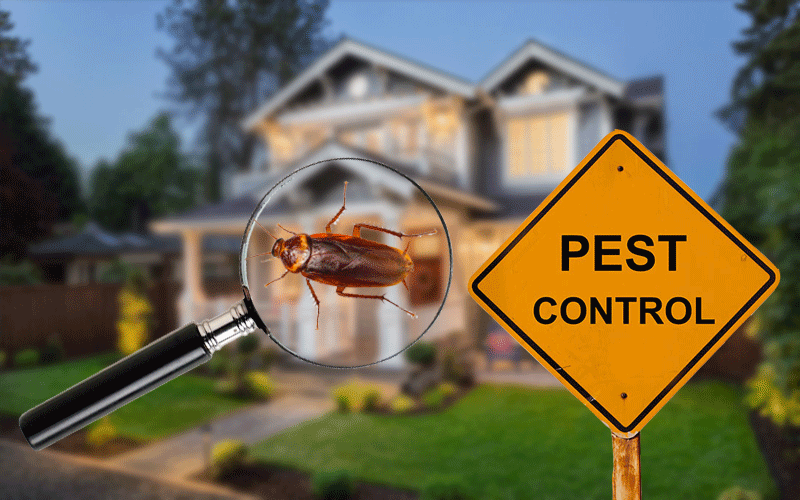Bed Pest Treatment Malfunction: Comparing Chemical Vs. Non-Chemical Solutions
In the world of bug control, especially when dealing with the consistent issue of bed insects, the option between chemical and non-chemical therapy options can be a critical one. Both approaches supply distinct benefits and disadvantages, influencing factors such as effectiveness, security considerations, and overall expense. By taking a look at the nuanced information of each method, a more clear understanding of which path to go after in resolving a bed bug invasion can be acquired.
Effectiveness of Chemical Treatments
Chemical therapies for bed insect infestations have been commonly acknowledged for their rapid and powerful efficiency in eradicating these pests. When thinking about the performance of chemical therapies, it is vital to understand that they can provide a detailed and fast service to a bed insect trouble. Professional pest control experts typically count on pesticides to target bed pests at various stages of their life cycle, consisting of fairies, grownups, and eggs. These chemicals normally function by interrupting the bed insects' nerve system, leading to paralysis and eventual death.
In addition, chemical therapies have the benefit of supplying recurring effects, suggesting that they can remain to get rid of bed insects also after the first application. This recurring action is specifically advantageous in combating any kind of potential re-infestations. In addition, the fast action of chemical therapies can bring alleviation to individuals dealing with serious bed insect invasions, allowing them to reclaim control of their home quickly.
Safety And Security Interest In Chemical Solutions
One crucial aspect that calls for cautious consideration when utilizing chemical remedies for bed pest therapy is making sure the safety of residents and the environment. Direct exposure to particular chemicals made use of in bed insect therapies can lead to respiratory problems, skin inflammation, or other negative reactions, specifically in people with pre-existing problems or sensitivities.
In addition, the ecological influence of chemical remedies is one more substantial factor to consider. Some chemicals utilized in bed pest therapies may be harmful to useful bugs, wild animals, and ecological communities if they leach into the soil or water supply. It is vital to use chemical treatments sensibly, adhering to safety and security guidelines, and considering less harmful choices to mitigate these threats and make sure the reliable and safe monitoring of bed bug infestations.
Benefits of Non-Chemical Methods
Thinking about the potential safety concerns and ecological effect associated with chemical solutions for bed bug therapy, checking out non-chemical techniques offers an appealing alternative with several unique benefits. Non-chemical therapies are environmentally friendly, as they do not add to air or water contamination, making them a sustainable option for pest control.
In addition, non-chemical services can be efficient in targeting bed pests, including hard-to-reach locations where chemical therapies may not pass through. Techniques such as heat treatment, vacuuming, vapor cleaning, and cushion encasements give detailed obliteration without making use of unsafe chemicals. Additionally, non-chemical approaches can be much less turbulent, calling for minimal prep work and permitting quicker reentry into treated locations. Overall, choosing non-chemical bed pest therapy methods not only prioritizes security and ecological protection however likewise makes certain thorough and effective parasite control.
Limitations of Non-Chemical Treatments

Additionally, non-chemical treatments often call for multiple applications to accomplish effective elimination. This can be time-consuming and might not constantly guarantee complete removal of all bed pests and their eggs, particularly in hidden or hard-to-reach locations.
Additionally, the success of non-chemical therapies heavily depends on appropriate application and thoroughness, which can be challenging for individuals without expert expertise. Inadequate application of non-chemical methods may lead to insufficient removal, causing relentless infestations and the need for added discover here therapies.
For that reason, while non-chemical therapies have their benefits, it is important to acknowledge these restrictions and consider them when establishing the most efficient method for handling bed insect invasions.
Price Contrast: Chemical Vs. Non-Chemical Options
Offered the constraints connected with non-chemical therapies, an important facet to evaluate in the context of bed pest monitoring is the cost contrast in between chemical and non-chemical choices. Chemical treatments commonly involve the application of pesticides by specialists, which can vary from $250 to $900 per room, depending upon the seriousness of the infestation and the dimension of the location to be dealt with. On the other hand, non-chemical treatments like heat treatment or vapor can be extra pricey, with costs varying from $1,000 to $6,000 for check these guys out an entire home. While the initial price of chemical treatments may appear lower, numerous treatments may be called for to totally get rid of the invasion, possibly raising the total price. On the other hand, non-chemical choices might supply an extra eco-friendly and lasting option, although they can be cost-prohibitive for some individuals. Inevitably, when considering the price of bed insect treatment alternatives, it is essential to consider the ahead of time expenditures against the performance and long-lasting sustainability of the selected technique.
Verdict

Considering the prospective security worries and environmental effect associated with chemical services for bed insect treatment, discovering non-chemical strategies presents an encouraging alternative with a number of unique benefits.Offered the limitations linked with non-chemical therapies, a necessary element to review in the context of bed insect administration is the cost contrast in between chemical and non-chemical options. In contrast, non-chemical treatments like heat therapy or steam can be much more costly, with prices varying from $1,000 to $6,000 for an entire home. While the first cost of chemical therapies may seem lower, several treatments might be required to completely eliminate the infestation, potentially enhancing the general price.In final thought, when contrasting chemical and non-chemical bed bug treatment alternatives, it is essential to take into consideration performance, safety, advantages, constraints, and price.
Comments on “A1 Bed Bug Exterminator Charlotte - Efficient and Affordable Services”